Stations of the Cross
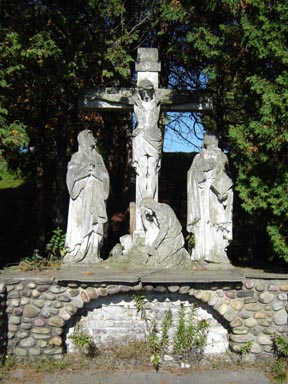
The Stations of the Cross, or in Latin the
Via Crucis, tell the story of the
Passion of Jesus Christ in fourteen steps or stations. Walking the
Stations is a tradition for Roman Catholics and also Anglicans and Lutherans.
It is
a common Lenten practice. Most of the stations come directly from Scripture
while the others come from tradition. The tradition to walk the path of
the Stations of the Cross developed for the faithful to better
contemplate the events of The Passion of Jesus Christ. The Stations were first
only at the historical sites of the Passion, however European Christians on
pilgrimage to the Holy Land took the idea of the Stations home with them, and made their own
versions of the holy walk.
There are two traditions to the development of the Stations. The first
tradition holds that the path of the Stations follows the route the Blessed
Virgin Mary took after Jesus Christ's resurrection. The other tradition is
linked to St. Francis of Assisi and his followers who popularized the first
Stations of the Cross when they were given custody of the holy sites in
Jerusalem in the 14th century.
The following is the Prayer of St. Francis to the Crucified Jesus:
Look down upon me, good and gentle Jesus, while before Thy face I humbly
kneel; and with burning soul pray and beseech Thee to fix deep in my heart
lively sentiments of faith, hope and charity, true contrition for my sins and a
firm purpose of amendment. While with great love and tender pity I
contemplate Thy five wounds, pondering over them within me, calling to mind the
words which David, Thy prophet, said of Thee, my Jesus: "They have pierced My
hands and My feet; they have numbered all My bones."
This prayer should be of particular interest to those who attend and have
attended St. Bonaventure University due to its Franciscan heritage and close ties
to St. Francis and his teachings.

The following description is from Isidore O'Brien, O.F.M., who captured the meaning of the Stations of the Cross for the St. Bonaventure community in his 1926 pamphlet entitled, "The Little Jerusalem, St. Bonaventure, New York."
It adds to the interest of a journey somewhat if you happen to know where you are going. That you recognize the fact that you are there when you land is even more gratifying.
The Stations themselves are laid out in a heart, symbolizing the Sacred Heart. From Station to Station, beside the path, runs a row of barberry shrubs like a trail of blood. In the center of the heart stands the Pieta, or the Sorrowful Mother. Mary holds the dead Christ in her lap. The Pieta symbolizes our emancipation: Mary holds in her hands our Title Deed to Heaven, signed in the Blood of Calvary. Above the Pieta an anchor rests on a shield. The anchor is hope, the shield is faith, the water of the lake is charity. At the five points of the shield, five evergreen trees symbolize the Five Wounds of Christ.
The stations are made by traveling from east to west. The figure of Christ on them is seen to be coming towards us; this is so to preserve the tradition...that at one time pilgrims made the Stations in backward sequence. It is the way that Mary made them on the night of the Crucifixion, as she came heart-broken down the trail that lead to Calvary.
The architecture of the Stations looks peculiarly flat and simple, but it links us very closely with the streets through which Christ passes carrying His Cross; for the battlements of the top represent the menacing fortress of Antonia, an the brick wall is a piece of the front of a house in Jerusalem, and the figures of Christ and the soldiers, as we see them on the terra-cotta brick ,are silhouettes thrown on the walls of Zion by the fitful March sunshine, as the sad procession moved towards the edge of the City- on up to Calvary.
Blue and white are the two leading colors in the figures.
Blue symbolizes penance; white symbolizes innocence. Blue tells of sin;
white speaks of of absolution.

The following pictures are of the Stations of the Cross, located in the St. Bonaventure Cemetery, across from St. Bonaventure campus. They were taken by Betty Eaton.
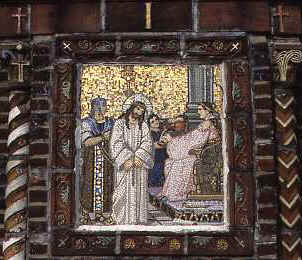 |
Jesus is condemned to death |
| Jesus receives the cross |
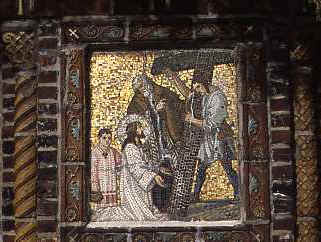 |
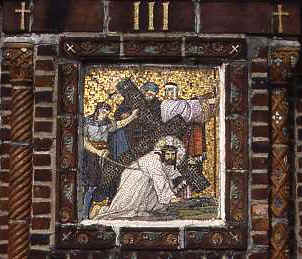 |
The first fall |
| Jesus meets His mother |
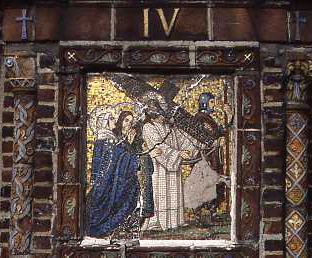 |
 |
Simon of Cyrene carries the cross |
| Veronica wipes Jesus' face with her veil |
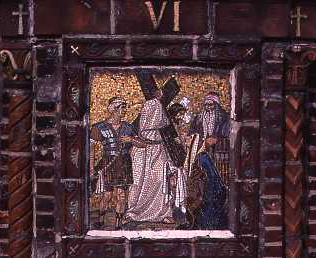 |
 |
The second fall |
| Jesus meets the women of Jerusalem |
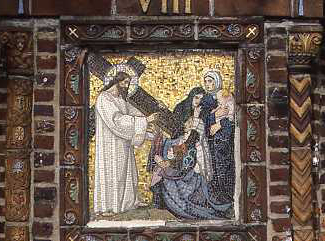 |
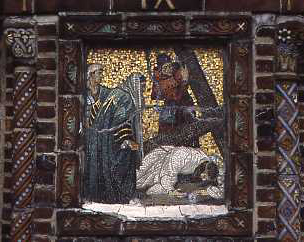 |
The third fall |
| Jesus is stripped of His garments |
 |
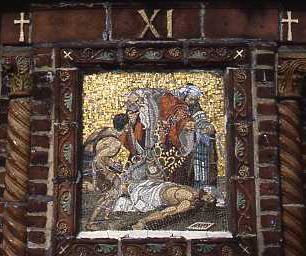 |
Jesus is nailed to the cross; The Crucifixion |
| Jesus dies on the cross |
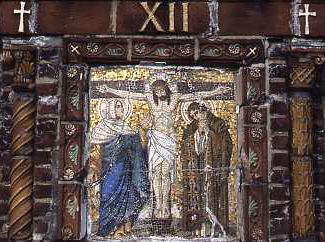 |
 |
Jesus' body is removed from the cross |
| Jesus is laid in the tomb |
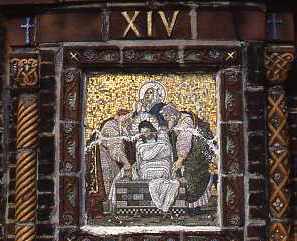 |
The Building of the Stations
The Stations of the Cross at St. Bonaventure Cemetery were built in 1926, under the direction of Fr. Thomas Plassmann, OFM. They are in a circular pattern to make outdoor processions easier. In order for the Stations to be built on the desired site a few graves had to be moved to the back of the cemetery. The Stations are built of red brick, like many of the buildings of St. Bonaventure University, and the pictures are formed by lovely mosaics. The terra cotta work was done by Q.W. Ketcham of Crum Lynne, PA.
According to a document in the St. Bonaventure Cemetery's records by Louis Waryncia the members of the St. Bonaventure Seminary would make the Stations of the Cross every Monday and Friday afternoon at 4:30pm. Waryncia writes further that the Stations of the Cross became known as "The Little Jerusalem" due to their symbolic recreation of Jesus Christ's walk to Calvary Hill.
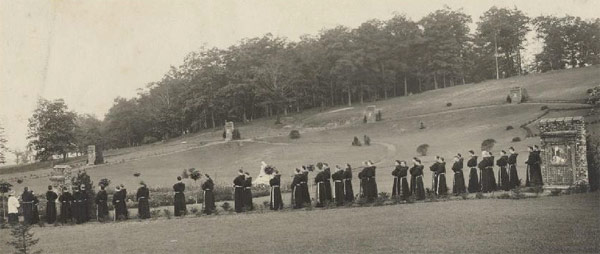
Stations of the Cross Today
The Stations of the Cross have under gone many changes since they were first built. The stations themselves remain the same, only time has changed their appearance. However, the grounds have changed greatly. The pathways and small lake are now gone and a beautiful lawn extends down the hill, leading up to the St. Bonaventure Cemetery. The grounds are well cared for, and flowers are planted each spring.
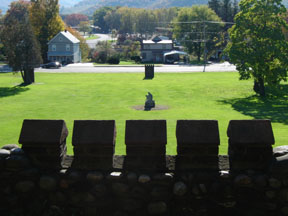 |
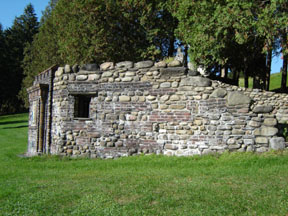 |
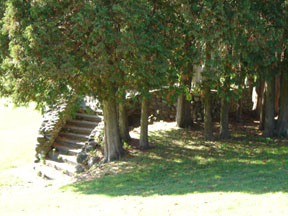 |